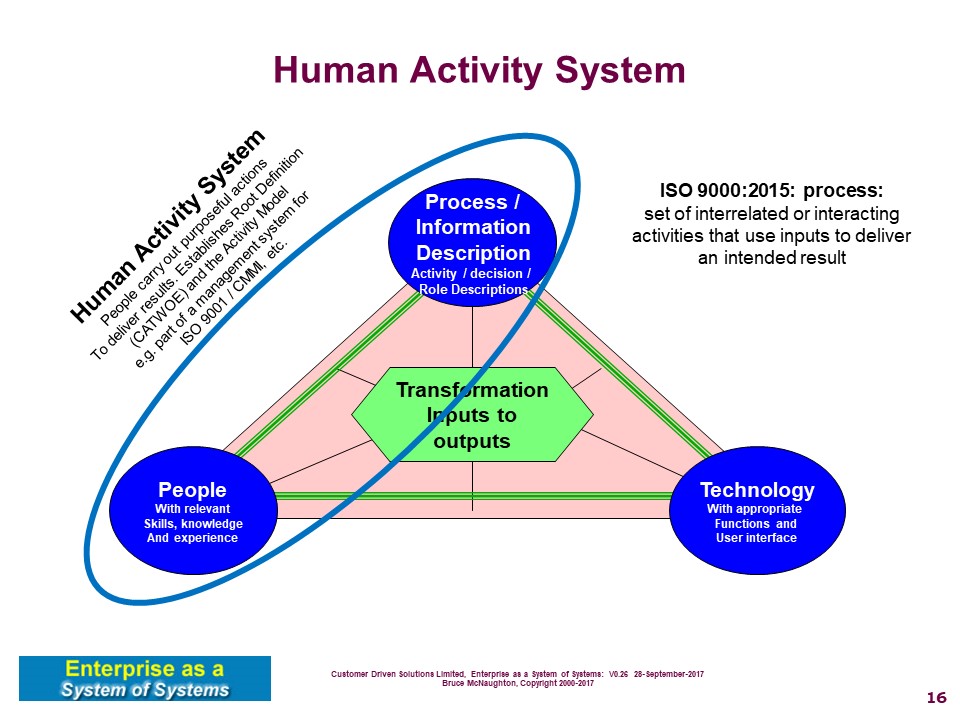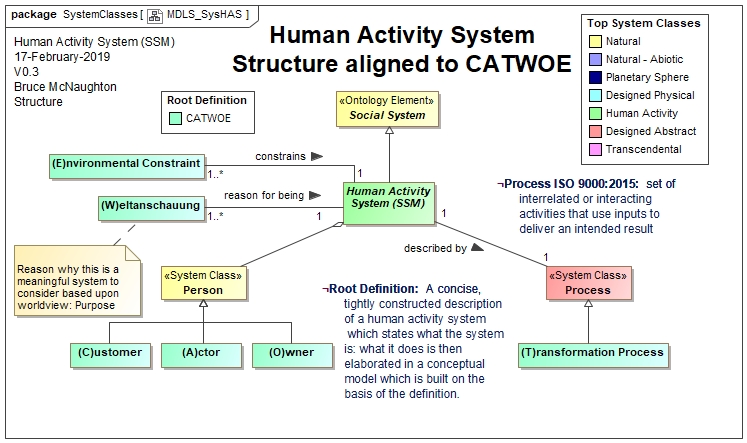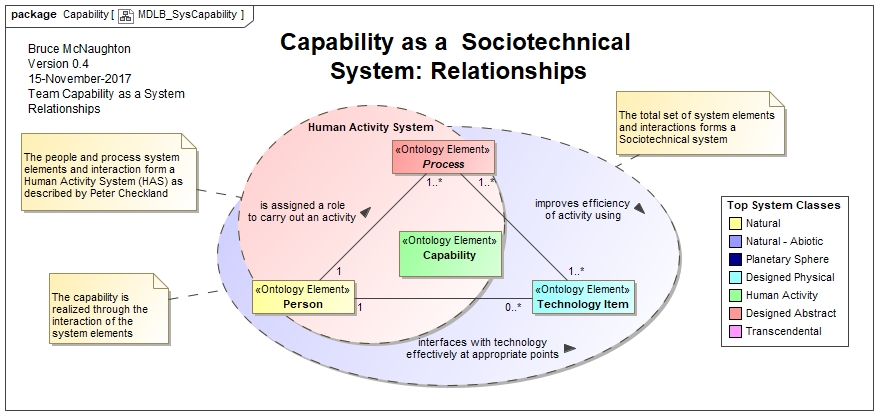Name: Human Activity System (HAS) from SSM
Based on: Sociotechnical System (based upon Social System)
Abstract System: This system has been identified as an abstract system that cannot be implemented directly. The abstract system establishes a shared pattern of characteristics that any system can use to describe its unique characteristics when referenced in the 'based on' list above. These references are described using a generalization association in UML.
The human activity system expresses a conceptual model of some human activity. This model describes a transformation of inputs into outputs and its stakeholders needs. The description of the system is generally documented in a 'Root Definition'.
The Conceptual Human Activity System (HAS) has been identified as an element of the Soft Systems Methodology by Peter Checkland.
One of the steps is to build a Conceptual Human Activity System (HAS) This model has similarities to other models around capabilities.

The human activity system (HAS) consists of a root definition and associated pictures.
See: Systems Thinking, Systems Practice, by Peter Checkland
NOTE: The Link to the System Description Template can also be used to describe a Human Activity System.
Systemic Measurable Variables
The variables are generally part of the Transformation section of the Root Definition. These variables are the measurable aspects of the human activity system.
Systemic Capabilities or Functions
The capabilities or functions of the human activity system are also described in the transformation part of the root definition. These describe what the system does.
System States
The various defined states that the system can be in.
- Conceptual
- Realized
The stakeholders and their concerns for the system are defined using the SSM process.
The key stakeholders are the:
- Customers
- Actors
- Owners
The environment and the potential impacts on the system-of-interest.
- Environment Constraints from the CATWOE.(Root Definition)
this section includes
- Transactional
- External
- Regulator
System Element: Identification

System Element: Relationships
When using this template for a real HAS, this section describes the internal system elements. The actual internal steps within the transformation process would provide visibility into the elements needed for the system.
The Human Activity System is shown in the next picture as part of the Capability System.

Key relationships between the system elements would also be found in the transformation section of the root definition showing how the steps work together. This also would describe the interaction of the various people and the steps in the process. The Capability System Behaviour shows an example of the behaviour and interaction of the system elements.
Configuration / Scenario:
Describes any configuration / scenario attributes for a specific system-of-interest. This may not be appropriate for all system descriptions (e.g. patterns or abstract systems).
Development Life Cycle Processes
See page 163 Figure 6 for the 7 steps in the SSM process:
1) The Problem Situation Unstructured
2) The Problem Situation expressed
3) Root Definitions of Relevant Systems
4) Conceptual Models
4a) Formal System Concept
4b) Other systems thinking
5) Comparison of 4 with 2
6) Feasible, desirable changes
7) Action to improve the problem situation
See Appendix 1 for a description for building conceptual models (Systems Thinking, Systems Practice)
Cyclical (Repeating / Regular) Processes
See the Root Definition Template
See the Example Root Definition for Project Management
The following references support this type of system-of-interest.